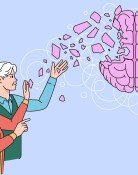Samsung to build ‘system semiconductor belt’
Samsung to build ‘system semiconductor belt’
Posted November. 25, 2021 07:22,
Updated November. 25, 2021 07:22
Samsung Electronics finalized a decision to build a new foundry plant in the U.S., getting close to completing the system semiconductor belt connecting Yongin, Hwaseong, and Pyeongtaek in South Korea and Austin and Taylor in the U.S. With this, Samsung Electronics, TSMC in Taiwan, and Intel in the U.S. will compete for the hegemony of the global system semiconductor market after 2024.
The semiconductor industry predicts that the recent investment by the South Korean company will make it the core pillar of the Joe Biden administration’s efforts to restructure the global semiconductor supply chain, which leads to South Korea emerging as the global hub of semiconductor research and development. It will not only create jobs in the U.S. but also contribute to high-quality jobs in South Korea by enhancing added values in South Korea’s research and development and production.
Samsung Electronics will build a new foundry plant in Taylor as the production foundation of ultra-fine process semiconductors. The company will begin construction next year with a target to begin mass production in the second half of 2024. Taiwan’s TSMC, which is ranked No. 1 in the global foundry market, is also building a new foundry plant in Arizona by investing 12 billion dollars with an aim to finish the construction by 2024. Intel, which recently announced to reenter the foundry market, is building two semiconductor plants in Arizona with 20 billion dollars by 2024.
According to Taiwanese market research company TrendForce, TSMC has a much bigger global foundry market share at 52.9 percent compared to Samsung Electronics’ 17.3 percent as of the second quarter of this year. However, the global market dynamics after 2024 will be decided based on how well each company attracts semiconductor customers in the North American market, according to the industry analysis. As such, competition among Samsung Electronics, TSMC, and Intel will intensify.
Samsung Electronics has a strategy to attract more clients and close its market share gap against TSMC based on its technological advantage in under 3nm ultra-fine process. Its core challenges are to secure enough productivity in North American production hubs and enhance research and development in South Korea.
The South Korean company’s goal is to become No. 1 in the global system semiconductor market by 2030. To the end, semiconductor-related researchers who were previously scattered across its sites are brought to its Device Solutions Research center at the research and development center in Hwaseong to develop cutting-edge process technologies.
Hyun-Seok Lim lhs@donga.com



![[단독]점유율 뚝-계약 줄취소…배터리도 구조조정 시사](https://dimg.donga.com/c/138/175/90/1/wps/NEWS/IMAGE/2026/01/15/133159957.1.jpg)


![[단독]“물건 보냈는데 돈 안와”… 국제정세 불안에 수출대금 8000억 떼일 위기](https://dimg.donga.com/c/138/175/90/1/wps/NEWS/IMAGE/2026/01/15/133160131.1.jpg)
